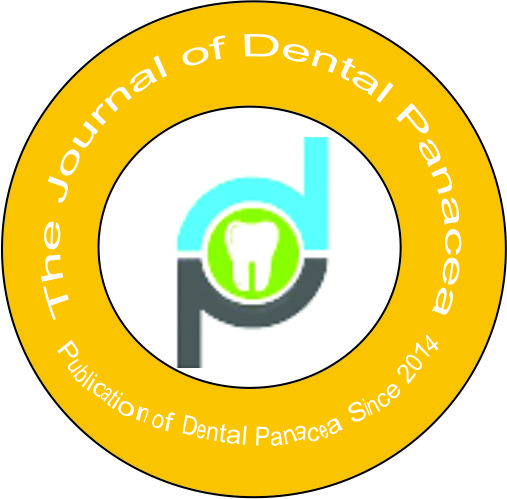- Visibility 151 Views
- Downloads 203 Downloads
- Permissions
- DOI 10.18231/j.jdp.2025.024
-
CrossMark
- Citation
Ectodermal dysplasia: An overview and a case report
- Author Details:
-
Pranali Manohar Nirgulkar *
-
Smita Arun Khalikar
-
Kishor Mahale
-
Vilas Rajguru
-
Sonali Vishal Mahajan
-
Ulhas Tandle
Ectodermal dysplasia (ED) comprises a group of rare inherited disorders characterized by abnormal development of ectodermal structures such as skin, hair, nails, teeth, and sweat glands. This paper provides an overview of major ED subtypes, including hypohidrotic, hidrotic, and other syndromic forms, highlighting their genetic etiology, clinical manifestations, and particularly the significant dental anomalies they cause. The report emphasizes the importance of early diagnosis and multidisciplinary management, especially concerning dental rehabilitation. A detailed case report of a 14-year-old boy with hypohidrotic ectodermal dysplasia illustrates the clinical challenges and prosthodontic management strategies involved. The patient, presenting with severe oligodontia and facial anomalies, was rehabilitated with custom complete dentures tailored for psychological and functional improvement. The discussion underscores the critical role of prosthetic interventions in maintaining aesthetics, mastication, and speech, while accommodating growth. The article concludes by advocating for timely prosthodontic care and individualized treatment planning, paving the way for future implant-supported solutions post-skeletal maturity.
Keywords: Ectodermal dysplasia, Clinical manifestation, Management
References
- Sarnat BG, Brodie AG, Kubacki WH. Fourteen years report of facial growth in case of complete anodontia with ectodermal dysplasia. AMA Am J Dis Child. 1953;86(2):162–9.
- Kratochvilova L, Dostalova T, Schwarz M, Macek M Jr, Marek I, Malíková M, et al. Ectodermal dysplasia: important role of complex dental care in its interdisciplinary management. Eur J Paediatr Dent. 2022;23(2):140–6.
- Novak AJ. Dental treatment of patients with ectodermal dysplasia. Birth Defects Orig Artic Ser. 1988;24(2):243–52
- Nomura S, Hasegawa S, Noda T, Ishioka K. Longitudinal study of jaw growth and prosthetic management in a patient with the ectodermal dysplasia and anodontia. Int J Paediatr Dent. 1993;3(1):29–38.
- Pigno MA, Blackman RB, Cronin RJ, Cavazos E. Prosthodontic management of ectodermal dysplasia: A review of the literature. J Prosthet Dent. 1996;76(5):541–5.
- Kravitz E, Pollack RL, Mueller DH. Nutrition during pregnancy, infancy, childhood, and adolescence. J Pedod. 1983;7(3):182–95.
- Ramos V, Giebink DL, Fisher JG, Christensen LC. Complete dentures for a child with hypohidrotic ectodermal dysplasia: a clinical report. J Prosthet Dent. 1995;74(4):329–31.
- Franchi L, Branchi R, Tollaro I. Craniofacial changes following early prosthetic treatment in a case of hypohidrotic ectodermal dysplasia with complete anodontia. ASDC J Dent Child. 1998;65(2):116–21.
- Shaw RM. Prosthetic management of hypohidrotic ectodermal dysplasia with anodontia. Case report. Aust Dent J. 1990;35(2):113–
- Dyson JE. Prosthodontics for children. In: Wei SHY, editor. Pediatric dentistry and orthodontics: total patient care. Philadelphia: Lea & Febiger; 1988. p. 259-74.
- Bonilla ED, Guerra L, Luna O. Overdenture prosthesis for oral rehabilitation of hypohidrotic ectodermal dysplasia: a case report. Quintessence Int. 19997;28(10):657–61
- Filius MA, Cune MS, Raghoebar GM, Vissink A, Visser A. Prosthetic treatment outcome in patients with severe hypodontia: a systematic review. J Oral Rehabil. 2016;43(5):373–87.
- Mascolo A, Boschetti E, Flanagan D. An ectodermal dysplasia patient treated with a small diameter implant supporting a single crown. Clin Cosmet Investig Dent. 2018;10:171–7.
- Yap AK, Klineberg I. Dental implants in patients with ectodermal dysplasia and tooth agenesis: a critical review of the literature. Int J Prosthodont. 2009;22(3):268–76.
- Singer SL, Henry PJ, Liddelow G, Rosenberg I. Long-term follow- up of implant treatment for oligodontia in an actively growing individual: a clinical report. J Prosthet Den. 2012;108(5):279–85
- Rajiv Kumar Gupta, Thallam Veer Padmanabhan, Bijoy Thomas, Prosthodontic Management of Brothers affected from Anhydrotic Ectodermal Dysplasia. Int J Prosthod Restor Dent. 2011;1(1):41–5.
How to Cite This Article
Vancouver
Nirgulkar PM, Khalikar SA, Mahale K, Rajguru V, Mahajan SV, Tandle U. Ectodermal dysplasia: An overview and a case report [Internet]. J Dent Panacea. 2025 [cited 2025 Oct 23];7(2):110-115. Available from: https://doi.org/10.18231/j.jdp.2025.024
APA
Nirgulkar, P. M., Khalikar, S. A., Mahale, K., Rajguru, V., Mahajan, S. V., Tandle, U. (2025). Ectodermal dysplasia: An overview and a case report. J Dent Panacea, 7(2), 110-115. https://doi.org/10.18231/j.jdp.2025.024
MLA
Nirgulkar, Pranali Manohar, Khalikar, Smita Arun, Mahale, Kishor, Rajguru, Vilas, Mahajan, Sonali Vishal, Tandle, Ulhas. "Ectodermal dysplasia: An overview and a case report." J Dent Panacea, vol. 7, no. 2, 2025, pp. 110-115. https://doi.org/10.18231/j.jdp.2025.024
Chicago
Nirgulkar, P. M., Khalikar, S. A., Mahale, K., Rajguru, V., Mahajan, S. V., Tandle, U.. "Ectodermal dysplasia: An overview and a case report." J Dent Panacea 7, no. 2 (2025): 110-115. https://doi.org/10.18231/j.jdp.2025.024
